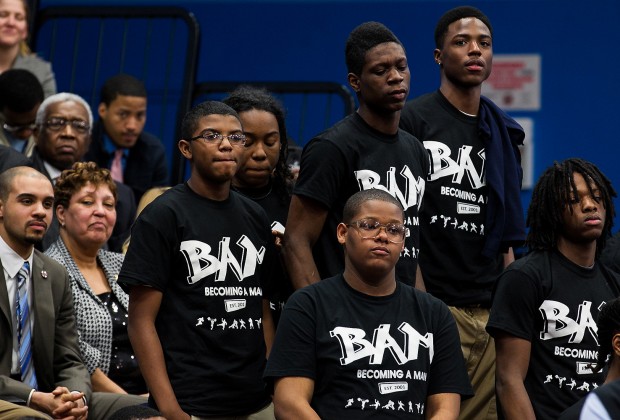
With whole neighborhoods mired in violence, inequality, and poverty, Chicago can sometimes seem to be at war with itself. Yet amid these battles—and perhaps precisely because of them—the city has become a font of scholarship and hands-on innovation that is transforming social policy worldwide.
Consider the work of Northwestern University economist Jonathan Guryan, who, with researchers at the University of Chicago, has shown that daily one-on-two math tutoring (one tutor mentoring two students) can lift academic performance across multiple subjects. It not only reduced the gap in math test scores between white and black students in Chicago’s public schools by a third but also improved black students’ performance in other subjects and increased their overall academic engagement. It was a novel notion: Nail math and you’ve got a leg up across the board.
Nobel Prize–winning University of Chicago economist James Heckman also had a game-changing idea about how young people learn. He demonstrated improved lifelong outcomes for children who participate in early-education programs from birth through age 5. Barack Obama, in his 2013 State of the Union address, identified this research as supporting his investment in quality pre-K education, with the aim of making it accessible to everyone, especially kids in areas where pre-K options are few.
Becoming a Man, a program run by the nonprofit Youth Guidance, is dramatically changing outcomes, too. BAM uses mentoring, group activities, and role-playing exercises to help steer young men away from the abyss of drugs and street violence. Participation in the program reduced total arrests in a trial study by 35 percent. It also improved school engagement, increased the chances of four-year high school graduation, and reduced recidivism. BAM, which helped inspire Obama’s My Brother’s Keeper initiative, is based on a simple but revolutionary methodology known as slow thinking. In one of BAM’s core exercises, two men are paired. Player 1 is instructed to grip a rubber ball as tightly as possible, and Player 2 is told he has a minute to get the ball out of Player 1’s hand. Most Player 2s try to use physical force to retrieve the ball. During debriefing, the group mentor asks why nobody simply asked for the ball. Player 2s typically state they assumed the conflict would escalate, yet most Player 1s say they would have given up the ball if asked.
The exercise teaches participants to resist preconceived notions and consider alternative strategies in order to head off violence. Like so many of Chicago’s social policy innovations, BAM proves that challenging assumptions can get you far.


